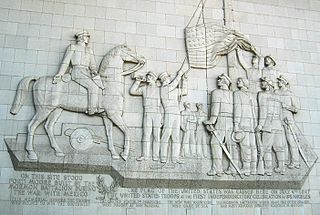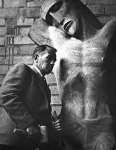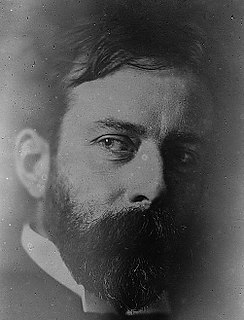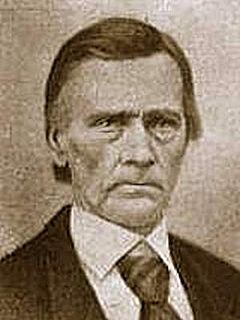Related Research Articles

Lee Oscar Lawrie was one of the United States' foremost architectural sculptors and a key figure in the American art scene preceding World War II. Over his long career of more than 300 commissions Lawrie's style evolved through Modern Gothic, to Beaux-Arts, Classicism, and, finally, into Moderne or Art Deco.

Daniel Chester French was an American sculptor of the late nineteenth and early twentieth centuries, best known for his design of the monumental statue of Abraham Lincoln (1920) in the Lincoln Memorial in Washington, D.C.

John Gutzon de la Mothe Borglum was an American sculptor most widely known for the colossal sculpture Mount Rushmore National Memorial. He was also associated with various other public works of art, including Stone Mountain in Georgia, the statue of Union General Philip Sheridan in Washington, D.C., as well as a bust of Abraham Lincoln which was exhibited in the White House by Theodore Roosevelt and which is now held in the United States Capitol crypt in Washington, D.C.

The Mormon Battalion was the only religious unit in United States military history in federal service and was recruited solely from one religious body and having a religious title as the unit designation. The volunteers served from July 1846 to July 1847 during the Mexican–American War of 1846–1848. The battalion was a volunteer unit of between 534 and 559 Latter-day Saint men, led by Mormon company officers commanded by regular U.S. Army officers. During its service, the battalion made a grueling march of nearly 2,100 miles from Council Bluffs, Iowa, to San Diego, California.

This is the Place Heritage Park is a Utah State Park that is located on the east side of Salt Lake City, Utah, United States, at the foot of the Wasatch Range and near the mouth of Emigration Canyon. A non-profit foundation manages the park.

Albert Stewart was an American sculptor.

Lorado Zadok Taft was an American sculptor, writer and educator. His 1903 book, The History of American Sculpture, was the first survey of the subject and stood for decades as the standard reference. He has been credited with helping to advance the status of women as sculptors.

James Earle Fraser was an American sculptor during the first half of the 20th century. His work is integral to many of Washington, D.C.'s most iconic structures.

The North Dakota State Capitol is the house of government of the U.S. state of North Dakota. The capitol, a 21-story Art Deco tower, is located in Bismarck at 600 East Boulevard Avenue, and is the tallest habitable building in the state. On a 160-acre (0.6 km2) campus that also houses many other government buildings, the capitol building and the surrounding office buildings house the state's legislative and judicial branches, as well as many government agencies.

Levi Ward Hancock was an early convert to Mormonism and was a general authority of The Church of Jesus Christ of Latter-day Saints for nearly fifty years. He was also one of the witnesses of the Book of Commandments.

Avard Tennyson Fairbanks was a 20th-century American sculptor. Over his eighty-year career, he sculpted over 100 public monuments and hundreds of artworks. Fairbanks is known for his religious-themed commissions for The Church of Jesus Christ of Latter-day Saints including the Three Witnesses, Tragedy of Winter Quarters, and several Angel Moroni sculptures on LDS temple spires. Additionally, Fairbanks sculpted over a dozen Abraham Lincoln-themed sculptures and busts among which the most well-known reside in the U.S. Supreme Court Building and Ford's Theatre Museum.

Edward J. Fraughton is an American artist, sculptor, and inventor. He is primarily known for his epic monumental works and individual collector editions that often relate to the history of the American West. Fraughton's stylistic goals follow the American Neo-classic/Beaux-Arts, impressionistic realism traditions of J. Q. A. Ward, Henry Merwin Shrady, James Earle Fraser, Hermon Atkins MacNeil, Daniel Chester French, Augustus Saint Gaudens, Cyrus Dallin, Gutzon and Solon Borglum, and American animaliers Arthur Putnam, Edward Kemeys, Phimister Proctor. A literal sculptor with an academic background in design and human anatomy, Fraughton's versatility covers a broad spectrum of human and animal subjects.

Benjamin Matthew Victor is an American sculptor living and working in Boise, Idaho. He is the only living artist to have three works in the National Statuary Hall in the United States Capitol. He was only 26 years old when his first statue, Sarah Winnemucca, a Paiute activist in Nevada, was dedicated in the Hall in 2005, making him the youngest artist to ever be represented in the Hall. In 2014, his sculpture of Norman Borlaug, "the father of the Green Revolution," was dedicated in the National Statuary Hall and in 2019, his statue of Chief Standing Bear, a Native American rights leader, was dedicated in the National Statuary Hall making him the only living artist to have three sculptures in the Hall.

George Washington is a statue by French sculptor Jean-Antoine Houdon from the late 18th century. Based on a life mask and other measurements of George Washington taken by Houdon, it is considered one of the most accurate depictions of the subject. The original sculpture is located in the rotunda of the Virginia State Capitol in Richmond, Virginia, and has been copied extensively.
Leonard Crunelle was a French-born American sculptor especially known for his sculptures of children. Crunelle immigrated with his family to the United States and worked as a coal miner in Decatur, Illinois. Lorado Taft discovered him as a youth and brought him to Chicago where he was an apprentice to the sculptors decorating the 1893 World's Fair Horticultural Exhibit. He studied at the Art Institute of Chicago with Taft.

Torleif Soviren Knaphus was a Norwegian-born artist and sculptor in Utah, primarily known for sculptures for and about The Church of Jesus Christ of Latter-day Saints.

For the monument in New Mexico, see Mormon Battalion Monument.

The Mormon Battalion Monument is installed outside the Utah State Capitol in Salt Lake City, in the U.S. state of Utah.
References
- 1 2 3 4 5 6 7 Kumerfield, Craig (October 27, 2015). "Gilbert Riswold, from area farm boy to a world class sculptor". Argus Leader. Retrieved March 9, 2018.
- 1 2 3 4 5 6 "Gilbert Riswold". UChicagoArts. University of Chicago. Retrieved April 24, 2018.
- ↑ "Mormon Battalion Monument". Utah State Capitol. Retrieved April 25, 2018.